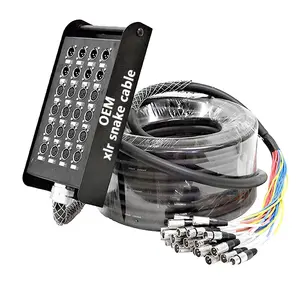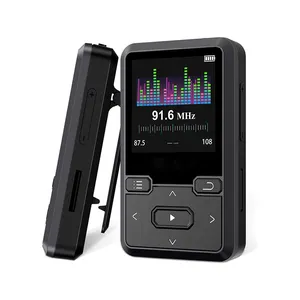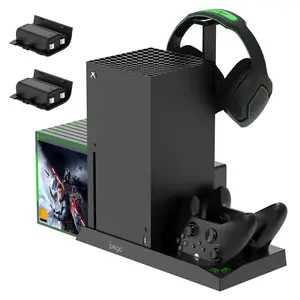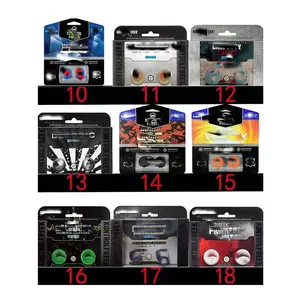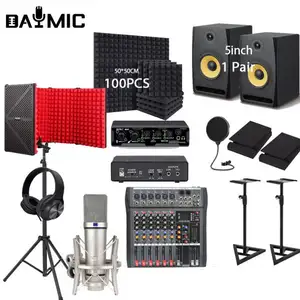Phổ biến trong ngành của bạn

Điện Thoại Headphone Adapter Để 3.5Mm AUX Âm Thanh Jack Với Microphone Tai Nghe Tai Nghe Dac Chuyển Đổi Kết Nối Nữ
0,98 US$
Đơn hàng tối thiểu: 100 Cái


Đen 3.5Mm Stereo Để 6.35Mm Stereo Mạ Vàng Âm Thanh Cáp Adapter Jack Hifi Âm Thanh AUX Microphone Cable Cho Trộn Giao Diện Điều Khiển
1,70 US$ - 2,93 US$
Đơn hàng tối thiểu: 1000 Cái


USB C Để 3.5Mm Âm Thanh Adapter Loại C Để Headphone AUX Jack Dongle Hifi Dac Cáp Dây Microphone Tai Nghe Điện Thoại Phụ Kiện
0,88 US$
Đơn hàng tối thiểu: 100 Cái
Vận chuyển mỗi chiếc: 0,20 US$


Wavelink 3.3V 5V USB để UART DC 3.5 mét 2.5 mét âm thanh jack cho loa Adapter Cáp
2,12 US$ - 3,47 US$
Đơn hàng tối thiểu: 500 Cái
Vận chuyển mỗi chiếc: 0,46 US$


Mạ Vàng 3.5Mm Stereo Để Tăng Gấp Đôi 6.35 Mono Âm Thanh Cáp Adapter Jack Hifi Âm Thanh AUX Cáp Cho Trộn Giao Diện Điều Khiển
2,23 US$ - 3,50 US$
Đơn hàng tối thiểu: 1000 Cái


2 Trong 1 Nhanh Phí USB C Đến 3.5 Mm Loại USB-C Âm Thanh Cáp Adapter Jack Headphone Splitter Sạc
0,78 US$ - 4,85 US$
Đơn hàng tối thiểu: 500 Cái
- 25%

Bộ Sạc 2 Trong 1 Loại C Đến 3.5 Mm Tai Nghe Jack Âm Thanh Cáp USB C Bộ Chuyển Đổi Kết Nối Type-C Sang 3.5 Mm Di Động Cho Điện Thoại Di Động
Sẵn sàng vận chuyển
0,56 US$ - 0,63 US$
Đơn hàng tối thiểu: 50 Cái
Vận chuyển mỗi chiếc: 0,30 US$

Lắp đặt xe tuôn ra USB 2.0 3.5mm âm thanh jack để 2rca mở rộng chì tấm cáp cáp
1,50 US$ - 2,50 US$
Đơn hàng tối thiểu: 50 Cái

Aivr Loại C Để 3.5 Mm Jack Headphone Adapter USB C Để 3.5 Mm Âm Thanh AUX Cáp Đối Với Huawei P30 P20 Pro Xiaomi Mi 9 8 OnePlus 7 7T
Sẵn sàng vận chuyển
1,43 US$ - 1,51 US$
Đơn hàng tối thiểu: 10 Cái
Vận chuyển mỗi chiếc: 0,81 US$

USB C Đến 3.5 Mm Headphone Jack Adapter
Sẵn sàng vận chuyển
1,09 US$ - 1,32 US$
Đơn hàng tối thiểu: 500 Cái
Vận chuyển mỗi chiếc: 1,13 US$

Bộ Chuyển Đổi Cáp Sạc 2 Trong 1 USB Loại C Sang 3.5 Mm
Sẵn sàng vận chuyển
0,64 US$ - 1,05 US$
Đơn hàng tối thiểu: 5 Cái
Vận chuyển mỗi chiếc: 4,74 US$

USB C đến 3.5mm jack AUX âm thanh tai nghe DAC Adapter Type-C 3 5 tai nghe chuyển đổi với 60W PD sạc cho iPad Pro không khí Samsung
7,56 US$ - 8,00 US$
Đơn hàng tối thiểu: 200 Cái
Các tìm kiếm liên quan:
jack 3 mm để usbmini usb đến 3.5mm jackusb 2.0 micro loại b jackgiắc cắm micro usb đến 3.5mm3.5mm jack để usb jackusb đến 3.5mm thùng jackgiắc cắm điện thoại usbgiắc cắm video usb sang âm thanhgiắc cắm tai nghe 3.5mm màu xanh lá câygiắc cắm usb 3.0giắc cắm usb 2.5giắc cắm âm thanh nổi 3.5mmgiắc cắm usb sang micjack cắm điện thoại mini stereo 2.5mmjack cắm điện thoại mini stereo 3.5mm

Loại C Đến 3.5 Mm Charger Headphone Âm Thanh Jack USB C Chuyển Đổi Cáp
0,67 US$ - 0,75 US$
Đơn hàng tối thiểu: 100 Cái

Oem utech USB Một đến DC 3.5 mét 1.35 mét 5 Volt DC Jack cáp điện
Sẵn sàng vận chuyển
0,29 US$ - 0,69 US$
Đơn hàng tối thiểu: 100 Cái
Vận chuyển mỗi chiếc: 0,57 US$

DAC 2 Trong 1 USB C Để 3.5 Mm Jack Tai Nghe Bộ Chuyển Đổi Âm Thanh Pd Nhanh Phí Loại C 3.5 Mm AUX Hi-Res Chuyển Đổi Cho iPad Pro Không Khí Samsung
Sẵn sàng vận chuyển
1,20 US$ - 1,75 US$
Đơn hàng tối thiểu: 50 Cái
Vận chuyển mỗi chiếc: 0,31 US$
- 40%

Bộ Chuyển Đổi Giắc Cắm Tai Nghe Ong Mới 3.5 Mm Bộ Chuyển Đổi Âm Thanh Usb Type C Sang 3.5 Mm Cho Samsung, Android, iPad
Sẵn sàng vận chuyển
0,53 US$ - 0,58 US$
Đơn hàng tối thiểu: 50 Cái
Vận chuyển mỗi chiếc: 0,34 US$

USB C Để 3.5 Mm Headphone Adapter USB Loại C Để Aux Âm Thanh Jack Hi-Res Dac Dongle Dây 180 Độ Xoay 3.5 Mm Chuyển Đổi Cáp
1,94 US$ - 7,77 US$
Đơn hàng tối thiểu: 100 Cái

Bộ Chuyển Đổi Tai Nghe UGREEN USB C Sang Loại C 3.5 Mm Bộ Chuyển Đổi Tai Nghe Hợp Kim Âm Thanh 3.5 Mm Với Bộ Sạc USB-C Cho Huawei Matebook
Sẵn sàng vận chuyển
5,59 US$
Đơn hàng tối thiểu: 10 Cái
Vận chuyển mỗi chiếc: 1,81 US$

USB Type C To 3.5 mm Earphone Jack Adapter 2 in 1 USB C Aux Audio Cable Converter Charging Splitter Headphone Adapter
Sẵn sàng vận chuyển
0,60 US$ - 1,00 US$
Đơn hàng tối thiểu: 20 Cái
Vận chuyển mỗi chiếc: 0,84 US$

Bộ Chuyển Đổi Giắc Cắm Type-C Sang 3.5 Mm Mới Tai Nghe Bộ Chuyển Đổi Âm Thanh Cáp Loại USB C Sang Tai Nghe 3.5 Mm Cáp Aux Cho Huawei P40 Lite
Sẵn sàng vận chuyển
0,10 US$ - 0,86 US$
Đơn hàng tối thiểu: 1 Cái
Vận chuyển mỗi chiếc: 4,31 US$

Bộ Chuyển Đổi Âm Thanh HiFi Type C 32Bit 384Khz Cho Giắc Cắm Điện Thoại Bộ Chuyển Đổi Âm Thanh Tai Nghe AUX Bộ Chuyển Đổi USB Loại C Sang Tai Nghe 3.5 Mm
Sẵn sàng vận chuyển
3,70 US$ - 4,00 US$
Đơn hàng tối thiểu: 1 Cái
Vận chuyển mỗi chiếc: 4,31 US$

Bộ Chuyển Đổi Giắc Cắm Tai Nghe Ong Mới 3.5 Mm Bộ Chuyển Đổi Âm Thanh Usb Type C Sang 3.5 Mm Cho Samsung, Android, iPad
Sẵn sàng vận chuyển
0,88 US$ - 0,96 US$
Đơn hàng tối thiểu: 50 Cái
Vận chuyển mỗi chiếc: 0,48 US$

Nhà Máy Giá USB C Đến 3.5 Mm Headphone Jack Adapter Loại C AUX Âm Thanh Tai Nghe Chuyển Đổi Đối Với Huawei Mate 40 xiaomi
Sẵn sàng vận chuyển
0,80 US$ - 1,05 US$
Đơn hàng tối thiểu: 10 Cái
Vận chuyển mỗi chiếc: 1,68 US$

Góc bên phải 90 Độ USB C đến 3.5mm Headphone Jack 2-trong-1 Loại C đến 3.5mm Headphone Âm Thanh và sạc Adapter
Sẵn sàng vận chuyển
0,72 US$ - 0,78 US$
Đơn hàng tối thiểu: 100 Cái
Vận chuyển mỗi chiếc: 0,41 US$

USB C đến 3.5mm jack AUX âm thanh tai nghe DAC Adapter Type-C 3 5 tai nghe chuyển đổi với 60W PD sạc cho iPad Pro không khí Samsung
Sẵn sàng vận chuyển
6,20 US$ - 6,60 US$
Đơn hàng tối thiểu: 5 Cái
Vận chuyển mỗi chiếc: 1,44 US$

Cáp Chuyển Đổi Tai Nghe Giắc Cắm Loại C Sang 3.5 Mm Cáp Âm Thanh Giắc Cắm Tai Nghe DAC USB C Cho Google
Sẵn sàng vận chuyển
6,00 US$
Đơn hàng tối thiểu: 2 Cái
Vận chuyển mỗi chiếc: 9,83 US$

Cáp Âm Thanh Type C Đến 3.5 Mm USB Type-C 3.5 Jack USB C Đến 3.5 Mm Cáp Aux Lò Xo Cho Tai Nghe Loa Âm Thanh Nổi Trên Xe Hơi
Sẵn sàng vận chuyển
2,81 US$ - 3,15 US$
Đơn hàng tối thiểu: 100 Cái
Vận chuyển mỗi chiếc: 0,73 US$

Nhà Máy Số Lượng Lớn Giá Rẻ Giá Usb Loại C Headphone Adapter Để 3.5 Mm Aux Âm Thanh Jack Adapter
4,20 US$
Đơn hàng tối thiểu: 500 Cái

Phù Hợp Với Samsung USB Loại C Để 3.5 Mm Âm Thanh AUX Tai Nghe Tai Nghe Adapter Jack Cho Tất Cả Các Điện Thoại Samsung Và Khác Loại C Các Thiết Bị
Sẵn sàng vận chuyển
0,62 US$ - 0,88 US$
Đơn hàng tối thiểu: 100 Cái
Vận chuyển mỗi chiếc: 0,19 US$

Loại C 3.5 Mm Headphone Jack Adapter USB C Để 3.5 Mm AUX Âm Thanh Chuyển Đổi Đối Với Samsung Google Huawei
1,20 US$ - 1,40 US$
Đơn hàng tối thiểu: 500 Cái

Hỗ trợ OEM USB C đến 3.5mm jack aux âm thanh tai nghe DAC Adapter Type-C 3 5 tai nghe chuyển đổi với 60W PD sạc
6,20 US$ - 8,20 US$
Đơn hàng tối thiểu: 50 Cái

Redmi Lưu Ý 9 Pro TPE Tai Nghe Jack USB C Headphone Jack Cáp Âm Thanh Thâm Quyến Nhà Sản Xuất Trực Tiếp Âm Thanh Chuyển Loại C Để 3.5 Mm
0,30 US$ - 1,20 US$
Đơn hàng tối thiểu: 100 Cái

Điện Thoại Di Động Bộ Chuyển Đổi Âm Thanh USB Loại C Đến 3.5 Mm Cáp Tai Nghe Jack Âm Thanh
Sẵn sàng vận chuyển
0,98 US$ - 1,38 US$
Đơn hàng tối thiểu: 5 Cái
Vận chuyển mỗi chiếc: 1,94 US$

Bộ Chuyển Đổi Giắc Cắm EONLINE Type-C Sang 3.5 Mm Tai Nghe Bộ Chuyển Đổi Âm Thanh Cáp Loại USB C Sang Tai Nghe 3.5 Mm Cáp Aux Cho Huawei P40 Lite
Sẵn sàng vận chuyển
0,65 US$ - 1,45 US$
Đơn hàng tối thiểu: 1 Cái
Vận chuyển mỗi chiếc: 4,41 US$

PSDA Cáp Chuyển Đổi Giắc Cắm Loại C Sang 3.5 Mm Tai Nghe Bộ Chuyển Đổi Âm Thanh Cáp Aux Tai Nghe Loại C Sang 3.5 Mm USB Cho Huawei P40 Lite
Sẵn sàng vận chuyển
0,38 US$ - 0,86 US$
Đơn hàng tối thiểu: 2 Cái
Vận chuyển mỗi chiếc: 2,16 US$
- 52%

Bán Buôn USB Loại C Nam Để 3.5 Mm Aux Nữ Headphone Jack Adapter Chuyển Đổi Với Tín Hiệu Kỹ Thuật Số Cho Tất Cả Các Điện Thoại
Sẵn sàng vận chuyển
1,23 US$ - 1,44 US$
Đơn hàng tối thiểu: 50 Cái
Vận chuyển mỗi chiếc: 0,13 US$

Loại C Nam Để 3.5 Mm Jack Nữ Âm Thanh AUX Cáp USB C Để 3.5 Mm Headphone Tai Nghe Adapter Cho Điện Thoại Di Động
Sẵn sàng vận chuyển
0,59 US$ - 0,65 US$
Đơn hàng tối thiểu: 20 Cái
Vận chuyển mỗi chiếc: 0,84 US$

Phụ Kiện Điện Thoại 3.5 Mm Âm Thanh Xe Hơi AUX Jack Để USB 2.0 Loại Một Nữ 3.5 Mm Jack Để USB Một OTG Chuyển Đổi Adapter Cable
Sẵn sàng vận chuyển
0,19 US$ - 0,35 US$
Đơn hàng tối thiểu: 100 Cái
Vận chuyển mỗi chiếc: 0,25 US$

USB AUX cáp âm thanh 3.5mm tai nghe cáp AUX chuyển đổi âm thanh cho Samsung iPad Sony USB để 3.5mm Jack Adapter
1,18 US$ - 1,48 US$
Đơn hàng tối thiểu: 100 Cái
Vận chuyển mỗi chiếc: 0,52 US$

USB Loại C đến 3.5mm jack AUX cáp DAC Loại-C Cáp âm thanh cho xe hơi Loa tai nghe Loại C phụ trợ Bộ chuyển đổi
Sẵn sàng vận chuyển
5,50 US$ - 7,00 US$
Đơn hàng tối thiểu: 20 Cái
Vận chuyển mỗi chiếc: 1,02 US$
Các danh mục hàng đầu
Giới thiệu về 3.5mm jack để usb
Alibaba.com cho phép bạn mua hàng chất lượng cao, cứng cáp và hiệu quả. 3.5mm jack để usb phù hợp lý tưởng cho tất cả các loại thiết bị điện tử riêng biệt cũng như các tiện ích. Những độc đáo và linh hoạt. 3.5mm jack để usb được làm từ dây chắc chắn, có thể chịu được nhiều điều kiện khác nhau. Những cái này. 3.5mm jack để usb là vô song khi kết hợp các thiết bị điện tử của bạn với nhau. Mua những sản phẩm này từ các nhà cung cấp và nhà bán buôn hàng đầu tại trang web để có những giao dịch ngoạn mục.
Chất lượng đáng kinh ngạc. 3.5mm jack để usb được tìm thấy trên trang web được làm bằng vật liệu chắc chắn như sợi nylon, tấm chắn bằng đồng đóng hộp, áo khoác PVC, v.v., đảm bảo hiệu suất lâu dài và bảo vệ chống lại tất cả các loại tác động bên ngoài. Những cái này. 3.5mm jack để usb được cách nhiệt tốt và cung cấp khả năng truyền tức thời cũng như bảo vệ khỏi các tác động từ bên ngoài. Chất lượng vật liệu và cấu trúc xây dựng của chúng. 3.5mm jack để usb đảm bảo không bị mất tín hiệu và tương thích với tất cả các loại TV, màn hình, điện thoại, v.v.
Alibaba.com cung cấp các lựa chọn toàn diện về. 3.5mm jack để usb ở nhiều kích thước, hình dạng, độ dài, màu sắc, tính năng và khả năng tương thích. Những cái này. 3.5mm jack để usb là cáp điều khiển cách điện PVC và có sẵn trong các biến thể khác nhau như cáp HDMI, cáp đồng trục, cáp nguồn, cáp truyền dữ liệu, cáp máy chiếu, v.v. Những phí bảo hiểm. 3.5mm jack để usb đều được chứng nhận ISO, CE, ROHS về tính xác thực và chất lượng nâng cao. Các sản phẩm cũng có ba lớp bảo vệ để giúp tránh EMI và RFI.
Duyệt qua thật tuyệt vời. 3.5mm jack để usb có phạm vi tại Alibaba.com và nhận sản phẩm của bạn với giá cả phải chăng. Những mặt hàng này có sẵn dưới dạng đơn đặt hàng OEM cùng với bao bì tùy chỉnh khi đặt hàng với số lượng lớn.
Chất lượng đáng kinh ngạc. 3.5mm jack để usb được tìm thấy trên trang web được làm bằng vật liệu chắc chắn như sợi nylon, tấm chắn bằng đồng đóng hộp, áo khoác PVC, v.v., đảm bảo hiệu suất lâu dài và bảo vệ chống lại tất cả các loại tác động bên ngoài. Những cái này. 3.5mm jack để usb được cách nhiệt tốt và cung cấp khả năng truyền tức thời cũng như bảo vệ khỏi các tác động từ bên ngoài. Chất lượng vật liệu và cấu trúc xây dựng của chúng. 3.5mm jack để usb đảm bảo không bị mất tín hiệu và tương thích với tất cả các loại TV, màn hình, điện thoại, v.v.
Alibaba.com cung cấp các lựa chọn toàn diện về. 3.5mm jack để usb ở nhiều kích thước, hình dạng, độ dài, màu sắc, tính năng và khả năng tương thích. Những cái này. 3.5mm jack để usb là cáp điều khiển cách điện PVC và có sẵn trong các biến thể khác nhau như cáp HDMI, cáp đồng trục, cáp nguồn, cáp truyền dữ liệu, cáp máy chiếu, v.v. Những phí bảo hiểm. 3.5mm jack để usb đều được chứng nhận ISO, CE, ROHS về tính xác thực và chất lượng nâng cao. Các sản phẩm cũng có ba lớp bảo vệ để giúp tránh EMI và RFI.
Duyệt qua thật tuyệt vời. 3.5mm jack để usb có phạm vi tại Alibaba.com và nhận sản phẩm của bạn với giá cả phải chăng. Những mặt hàng này có sẵn dưới dạng đơn đặt hàng OEM cùng với bao bì tùy chỉnh khi đặt hàng với số lượng lớn.
